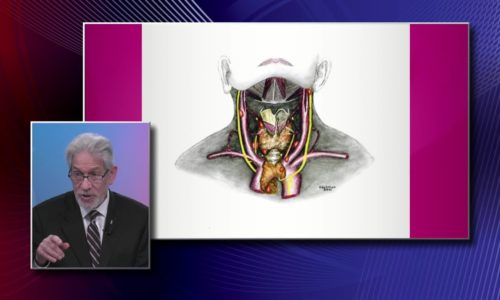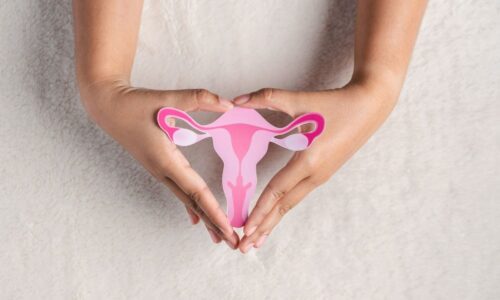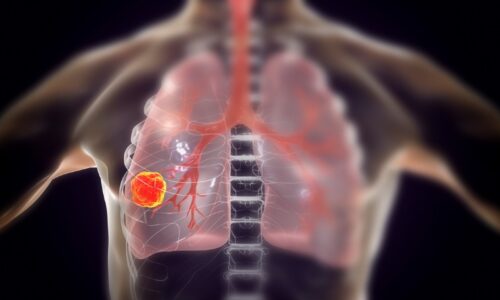Types of Breast Reconstructive Surgery |
Flap, fat grafting, and tissue expansion are types of surgery techniques for breast reconstruction. Dr. Miguel Angel Medina, Director of Microsurgery with Miami Cancer Institute, says there are two major pathways: breast reconstruction with an implant or breast construction involving your own tissues.
He explains the flap technique is using your own tissues where they transplant abdominal tissue and re-implant it into another part of the body. He also points out there is no implant, it is soft and it is the best match for the tissue that has been removed.
Transcript
Let’s talk about the different types of reconstructive surgery because there are several procedures the first one that we hear a lot about is flap there’s fat grafting and tissue expansion so I guess first let’s talk about flap that’s right so when we talk to our patients about breast cancer and breast reconstruction there’s really two major pathways and those major pathways are either breast reconstruction with an implant or breast reconstruction involving your own tissues the flap would be using your own tissues and in the majority of our hands these days that involves a microvascular transfer of tissue where we actually transplant tissue off of the body from one section and re implant it into another part of the body almost say you’re having a kidney transplant but instead of a kidney it’s your abdomen your abdominal tissue to your chest but it’s very much the same thing completely detaching that tissue and that has a lot of risks in the reconnection of the tissue we reconnect them under a microscope very small blood vessels that are very delicately sewn and then we have protocols for monitoring how that tissue is reacting afterwards and whether or not we need to go back and relook at that hook-up in general problems with that hook-up happened around four or five percent of times that requires going back to the operating room to take a look at the connection and then in those patients that have to go back that you know about half or 70% of those we’re able to save all or parts of the tissue so we when we talk about was the overall risk of someone not having a successful flap operation in experienced centers high volume centers that runs around 2% so that’s an important number that we that we talk about the beauty of that operation for candidates were able to do it is you have your all your own tissues there’s no implant to worry about you it’s soft it looks like a breast it’s the best match for the tissue that has been removed but not everyone has the ability to donate that tissue that most often that comes from the lower abdomen and so people have to have enough lower abdominal tissue you
Flap, fat grafting, and tissue expansion are types of surgery techniques for breast reconstruction. Dr. Miguel Angel Medina, Director of Microsurgery with Miami Cancer Institute, says there are two major pathways: breast reconstruction with an implant or breast construction involving your own tissues.
He explains the flap technique is using your own tissues where they transplant abdominal tissue and re-implant it into another part of the body. He also points out there is no implant, it is soft and it is the best match for the tissue that has been removed.
Transcript
Let’s talk about the different types of reconstructive surgery because there are several procedures the first one that we hear a lot about is flap there’s fat grafting and tissue expansion so I guess first let’s talk about flap that’s right so when we talk to our patients about breast cancer and breast reconstruction there’s really two major pathways and those major pathways are either breast reconstruction with an implant or breast reconstruction involving your own tissues the flap would be using your own tissues and in the majority of our hands these days that involves a microvascular transfer of tissue where we actually transplant tissue off of the body from one section and re implant it into another part of the body almost say you’re having a kidney transplant but instead of a kidney it’s your abdomen your abdominal tissue to your chest but it’s very much the same thing completely detaching that tissue and that has a lot of risks in the reconnection of the tissue we reconnect them under a microscope very small blood vessels that are very delicately sewn and then we have protocols for monitoring how that tissue is reacting afterwards and whether or not we need to go back and relook at that hook-up in general problems with that hook-up happened around four or five percent of times that requires going back to the operating room to take a look at the connection and then in those patients that have to go back that you know about half or 70% of those we’re able to save all or parts of the tissue so we when we talk about was the overall risk of someone not having a successful flap operation in experienced centers high volume centers that runs around 2% so that’s an important number that we that we talk about the beauty of that operation for candidates were able to do it is you have your all your own tissues there’s no implant to worry about you it’s soft it looks like a breast it’s the best match for the tissue that has been removed but not everyone has the ability to donate that tissue that most often that comes from the lower abdomen and so people have to have enough lower abdominal tissue you
Flap, fat grafting, and tissue expansion are types of surgery techniques for breast reconstruction. Dr. Miguel Angel Medina, Director of Microsurgery with Miami Cancer Institute, says there are two major pathways: breast reconstruction with an implant or breast construction involving your own tissues.
He explains the flap technique is using your own tissues where they transplant abdominal tissue and re-implant it into another part of the body. He also points out there is no implant, it is soft and it is the best match for the tissue that has been removed.
Transcript
Let’s talk about the different types of reconstructive surgery because there are several procedures the first one that we hear a lot about is flap there’s fat grafting and tissue expansion so I guess first let’s talk about flap that’s right so when we talk to our patients about breast cancer and breast reconstruction there’s really two major pathways and those major pathways are either breast reconstruction with an implant or breast reconstruction involving your own tissues the flap would be using your own tissues and in the majority of our hands these days that involves a microvascular transfer of tissue where we actually transplant tissue off of the body from one section and re implant it into another part of the body almost say you’re having a kidney transplant but instead of a kidney it’s your abdomen your abdominal tissue to your chest but it’s very much the same thing completely detaching that tissue and that has a lot of risks in the reconnection of the tissue we reconnect them under a microscope very small blood vessels that are very delicately sewn and then we have protocols for monitoring how that tissue is reacting afterwards and whether or not we need to go back and relook at that hook-up in general problems with that hook-up happened around four or five percent of times that requires going back to the operating room to take a look at the connection and then in those patients that have to go back that you know about half or 70% of those we’re able to save all or parts of the tissue so we when we talk about was the overall risk of someone not having a successful flap operation in experienced centers high volume centers that runs around 2% so that’s an important number that we that we talk about the beauty of that operation for candidates were able to do it is you have your all your own tissues there’s no implant to worry about you it’s soft it looks like a breast it’s the best match for the tissue that has been removed but not everyone has the ability to donate that tissue that most often that comes from the lower abdomen and so people have to have enough lower abdominal tissue you
Flap, fat grafting, and tissue expansion are types of surgery techniques for breast reconstruction. Dr. Miguel Angel Medina, Director of Microsurgery with Miami Cancer Institute, says there are two major pathways: breast reconstruction with an implant or breast construction involving your own tissues.
He explains the flap technique is using your own tissues where they transplant abdominal tissue and re-implant it into another part of the body. He also points out there is no implant, it is soft and it is the best match for the tissue that has been removed.
Transcript
Let’s talk about the different types of reconstructive surgery because there are several procedures the first one that we hear a lot about is flap there’s fat grafting and tissue expansion so I guess first let’s talk about flap that’s right so when we talk to our patients about breast cancer and breast reconstruction there’s really two major pathways and those major pathways are either breast reconstruction with an implant or breast reconstruction involving your own tissues the flap would be using your own tissues and in the majority of our hands these days that involves a microvascular transfer of tissue where we actually transplant tissue off of the body from one section and re implant it into another part of the body almost say you’re having a kidney transplant but instead of a kidney it’s your abdomen your abdominal tissue to your chest but it’s very much the same thing completely detaching that tissue and that has a lot of risks in the reconnection of the tissue we reconnect them under a microscope very small blood vessels that are very delicately sewn and then we have protocols for monitoring how that tissue is reacting afterwards and whether or not we need to go back and relook at that hook-up in general problems with that hook-up happened around four or five percent of times that requires going back to the operating room to take a look at the connection and then in those patients that have to go back that you know about half or 70% of those we’re able to save all or parts of the tissue so we when we talk about was the overall risk of someone not having a successful flap operation in experienced centers high volume centers that runs around 2% so that’s an important number that we that we talk about the beauty of that operation for candidates were able to do it is you have your all your own tissues there’s no implant to worry about you it’s soft it looks like a breast it’s the best match for the tissue that has been removed but not everyone has the ability to donate that tissue that most often that comes from the lower abdomen and so people have to have enough lower abdominal tissue you








